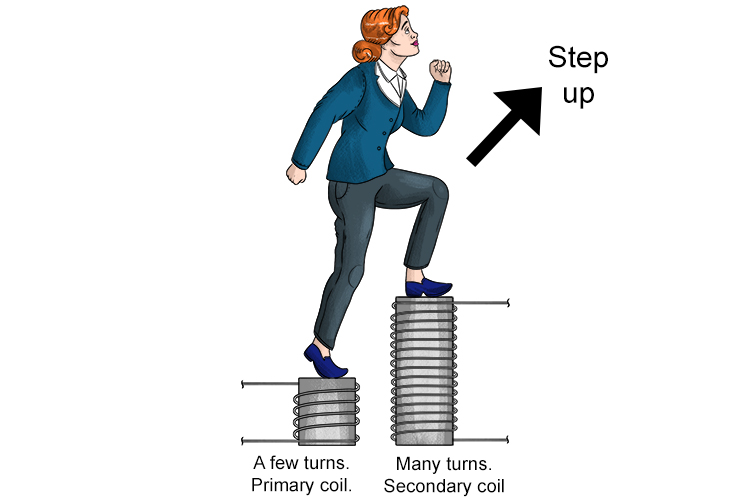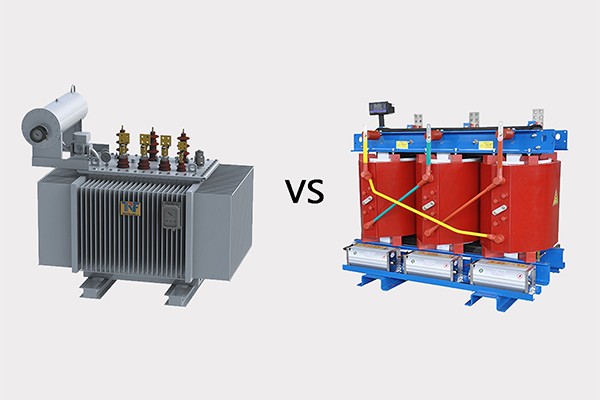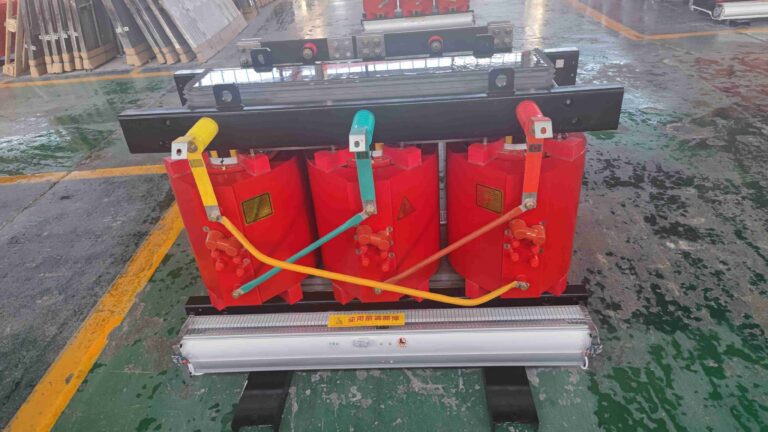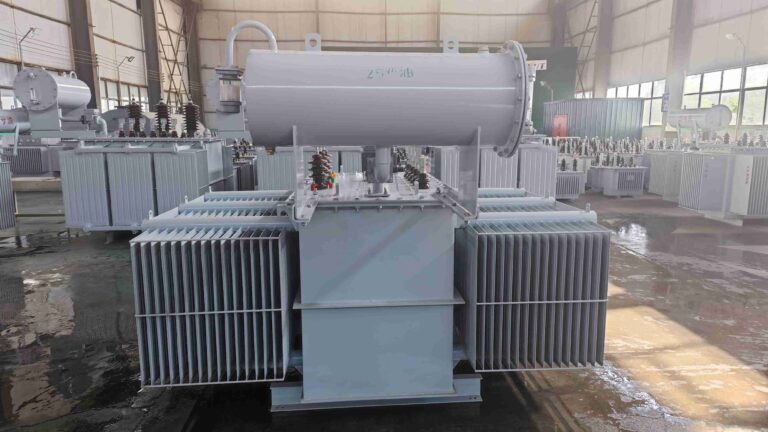Single Phase Pole Mounted Transformer

50KVA Single Phase Pole Mounted Transformer
- Capacity:50KVA
- Cooling type: ONAN
- Frequency : 50/60HZ
- Efficiency: 99.11%
BYT 50KVA single-phase pole-mounted transformer is a compact and efficient electrical distribution transformer designed for residential and commercial applications. With a rated capacity of 50KVA, this transformer is suitable for converting high primary voltages to lower secondary voltages for safe and reliable power distribution. It features a durable pole-mounted design for easy installation and maintenance, making it ideal for outdoor use. The transformer is equipped with high-quality insulation materials and protective features to ensure safe and reliable operation. This transformer is a cost-effective solution for delivering stable power supply to various applications.


Introduction of 50KVA Single Phase Pole Mounted Transformer
The features and advantages of 50KVA single phase pole mounted transformer:
1) Compact Design: The pole-mounted transformer has a compact and space-saving design, making it suitable for installation in areas with limited space availability.
2) Easy Installation: The pole-mounted configuration allows for quick and easy installation on utility poles, reducing installation time and costs.
3) Outdoor Use: Designed for outdoor use, the transformer is built to withstand harsh weather conditions, ensuring reliable operation in various environments.
4) High Efficiency: The transformer is designed to deliver high efficiency in converting voltage levels, reducing energy losses and improving overall system performance.
5) Reliable Performance: With high-quality insulation materials and advanced protective features, the transformer offers reliable and safe operation, minimizing the risk of electrical faults and downtime.
6) Versatile Applications: The 50KVA single-phase transformer is suitable for a wide range of applications, including residential, commercial, and industrial power distribution.
7) Cost-Effective Solution: The transformer provides a cost-effective solution for power distribution, offering efficient voltage conversion and reliable performance at a competitive price point.
8) Low Maintenance: The transformer requires minimal maintenance, thanks to its durable construction and reliable components, reducing maintenance costs and downtime.
Technical Specification of Single Phase Pole Mounted Transformer
| Technical Specs | |
|---|---|
| Rating | 50 KVA |
| Type | Pole-Mounted Distribution Transformer |
| No. of Phases | 1 |
| Frequency | 60 Hz |
| Primary Voltage | 25/37.5 KV |
| Secondary Voltage | 120/240/480 V |
| Tapping Range | ±2 x 2.5% |
| Winding Material | Copper / Aluminum |
| Core Material | Grain Oriented Silicon Steel Sheet |
| Impedance | 1.5 – 4.5 % |
| Efficiency | 99.11% |
| Cooling Type | ONAN |
| Average Winding Rise | 55 °C, 55/65 °C, 65 °C |
| Fluid Type | Non-PCB Mineral Oil / FR3 Biodegradable |
| Tap Changer | Off-Load Tap Changer |
| IEEE Standards | C57.12.00, C57.12.20, C57.12.31, C57.12.35, C57.12.90, C57. 91 and C57.154 |
| NEMA Standard | NEMA TR 1 |
| Tank Coating | IEEE Std C57.12.31-2010 |
Drawing of Single Phase Pole Mounted Transformer
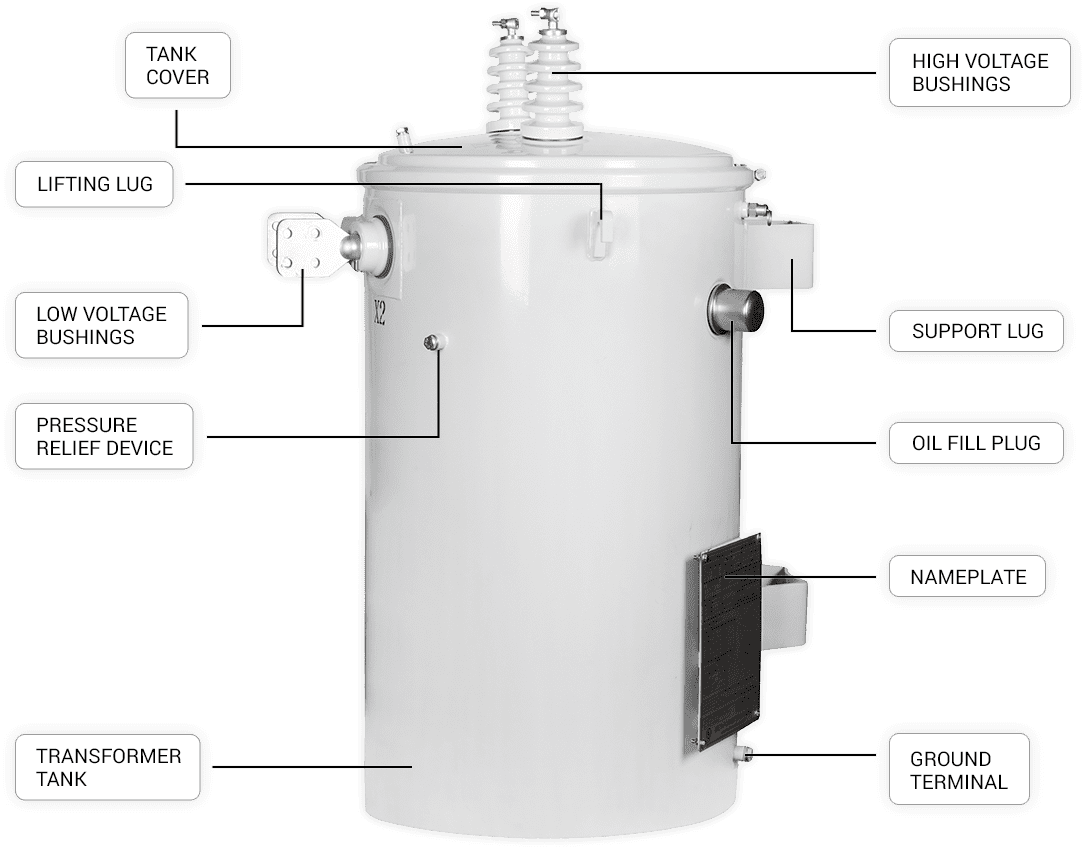
Get in Touch
- Sales Manager: Eric
- Phone: +86-15515007426
- Whatsapp: +86-15515007426
- Factory Address: Beiyoute Industrial Park, Xujia Gou Town, Yindu District, Anyang City




